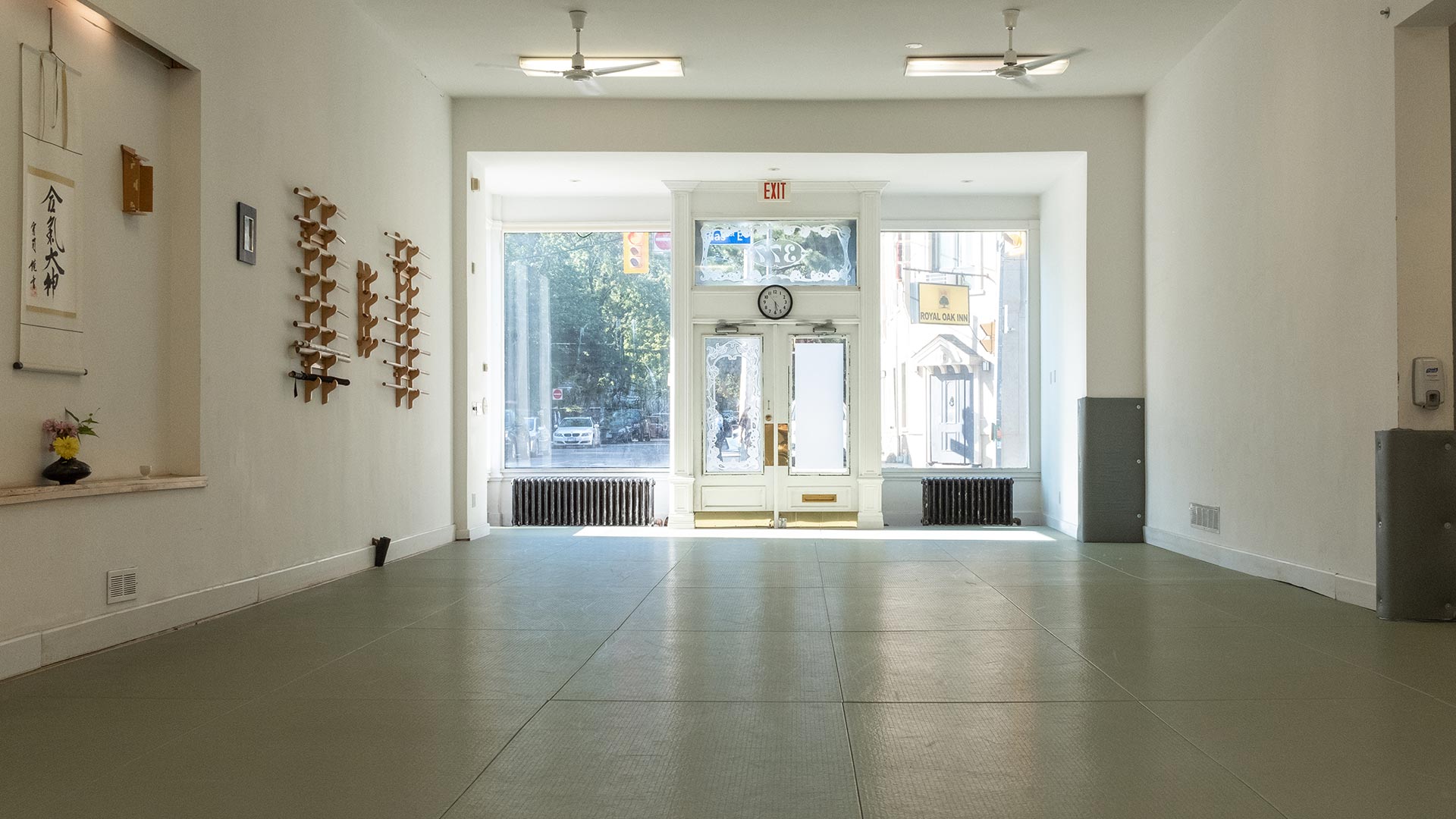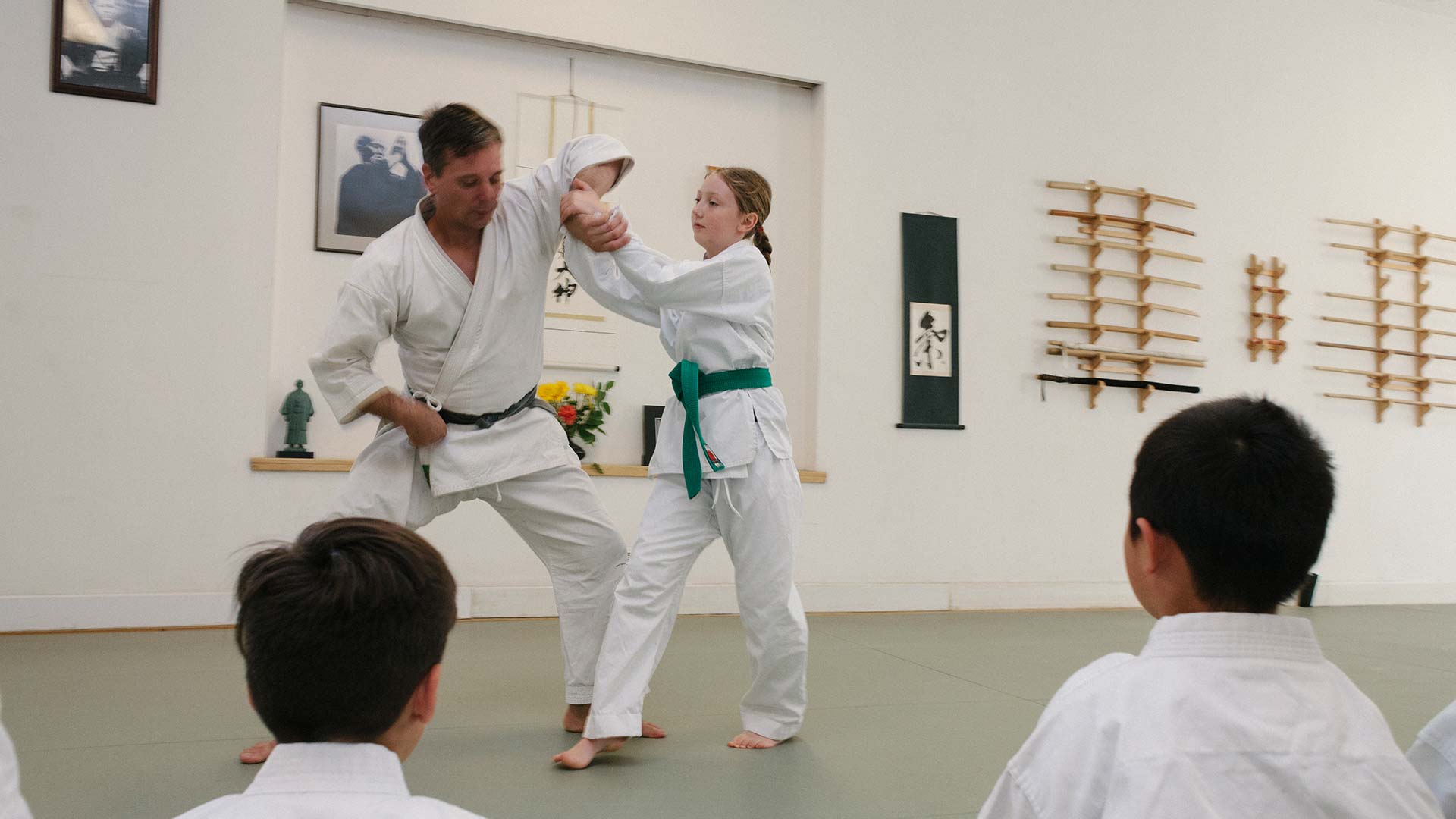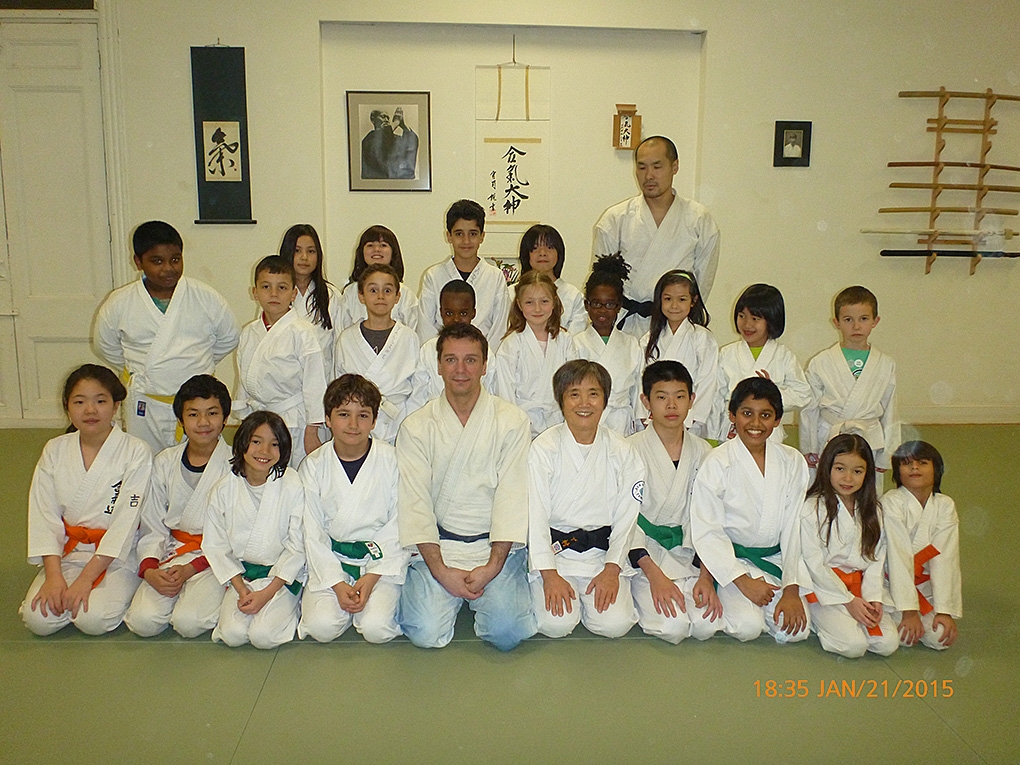Aikido Tendokai welcomes new beginners to try our kid’s martial arts program for fun and fitness through a free trial class.
Classes run once a week: Wednesday after school.
3-month kids martial arts introduction $120**.
Tendokai’s Kid’s After School Program is run out of our large sunny Cabbagetown dojo. Black- belt instructors maintain a safe and disciplined environment, while recognizing that without fun group activities, kids’ concentration suffers. The kids in the After School Program are diverse and enthusiastic, encouraged by testing and the opportunity to assist the instructors as their skills advance.
Kids generally join from ages 6 -12. Instruction is tailored to age, level and maturity. Initially, kids learn the basics of falling safely, rolling, and working with others, through gentle practices such as rolling over a ball, and falling with chins tucked to protect their heads. After absorbing the basics safely, they learn to work with others in practicing attacks such as holds, strikes and grabs and counter-defences such as shifts in balance, throws, or stepping aside. The benefits of Aikido for children are many. Primarily it is fun, active, and interactive. It increases kids’ fitness, focus, and discipline; as well as their sense of balance and co-operation. [Improved balance and techniques for safe falling help kids off the mat too- with falling off bikes for instance!]
Parents who bring their kids can stay and watch classes with other parents and kids on the dojo couch. Parents are equally important to the community, joining in activities, helping out at barbeques; even joining classes themselves on occasion.
Dojo etiquette teaches children respect for their space, their practice, their partners, their teachers and themselves. [They even learn a little basic Japanese] Within the structure, kids learn to practice respectfully regardless of a partner’s age, size, ethnicity or gender. Children work with any child who bows to them to initiate practice [bowing is a sign of respect but children who cannot bow for religious reasons, are still welcome]’. For some children, even the act of initiating practice with another child, can be a challenge in itself [never mind tying their own belts]. Aikido is based on shared learning. Senior students enhance their own learning by mentoring new beginners, helping them with techniques and guiding them in safe practice. In this way, their capacity to guide and work with others is broadened; they gain an understanding of how their own bodies move and how it affects their partners. Aikido practice heightens children’s self-confidence in their physical and interactive capacities.
Children are tested by the lead instructors in front of their peers based on a specified number of in-class hours in tandem with their observed readiness. Certificates and a range of coloured belts are awarded as their level and skills increase. When they bow [with a big grin] to their peers upon receiving a certificate and belt, they have good reason to feel proud.
Martial Arts Dojo Etiquette
The traditional etiquette of Japanese martial arts will be observed in our dojo at all times.
Bowing
Bowing is an important part of Budo etiquette. Please note that this bowing has no religious significance. Students should perform a standing bow when they walk in the dojo door. They should perform a seated bow when first stepping on the mat.
Martial Arts Equipment
Each student must provide his or her own gi (uniform) and zori (sandals or other footwear).
The student should not be barefoot EXCEPT on the mat. No footwear of any kind should be worn on the mat. As well, ALL jewellery should be removed before practising.
A trial class can be taken in any loose clothing without buckles that covers the knees and elbows, such as a sweatsuit.




